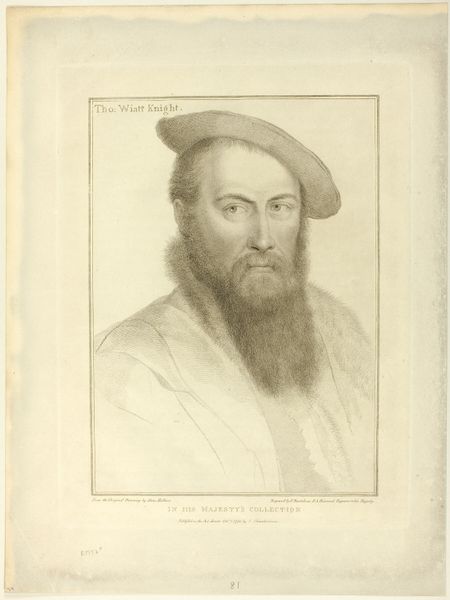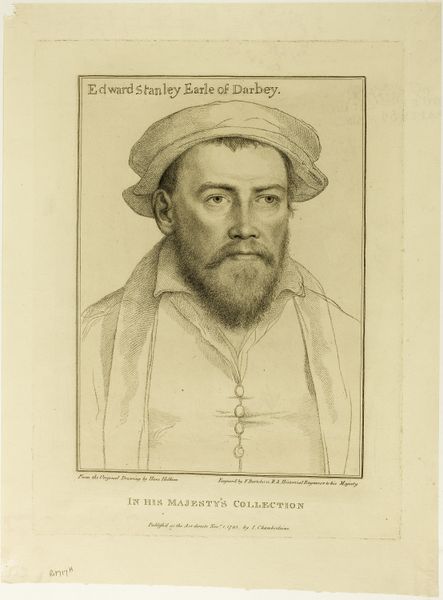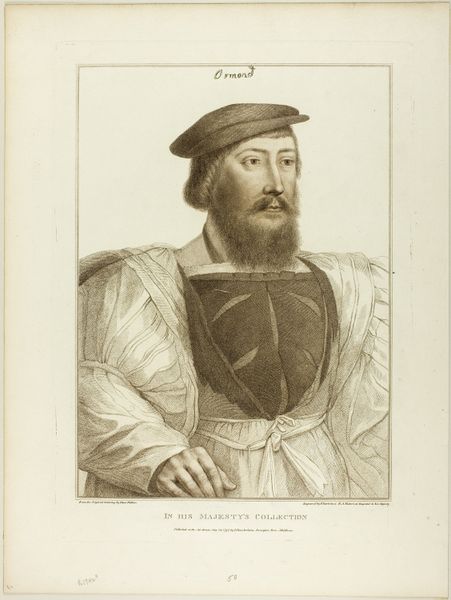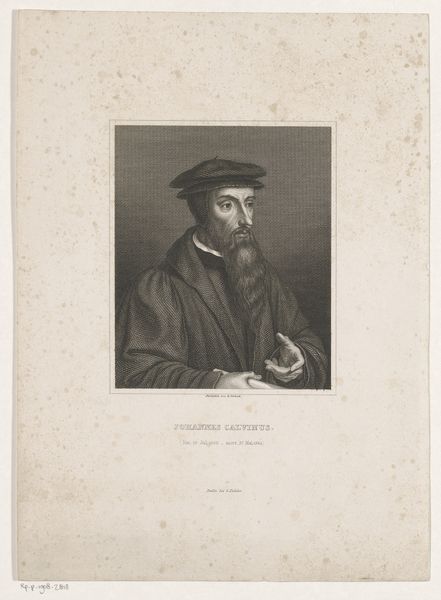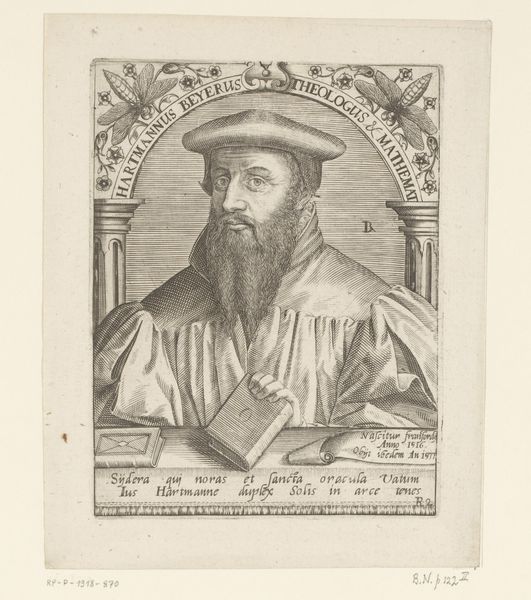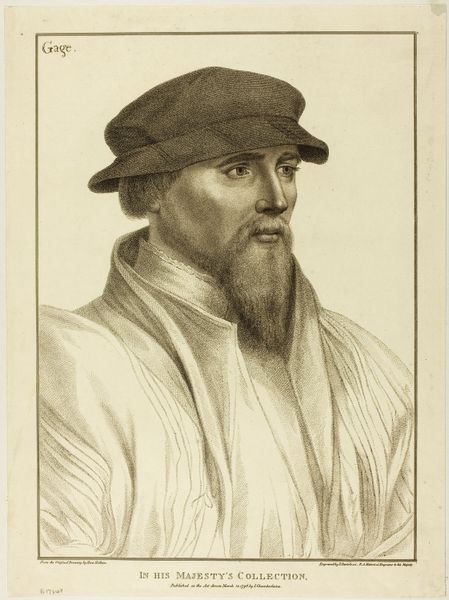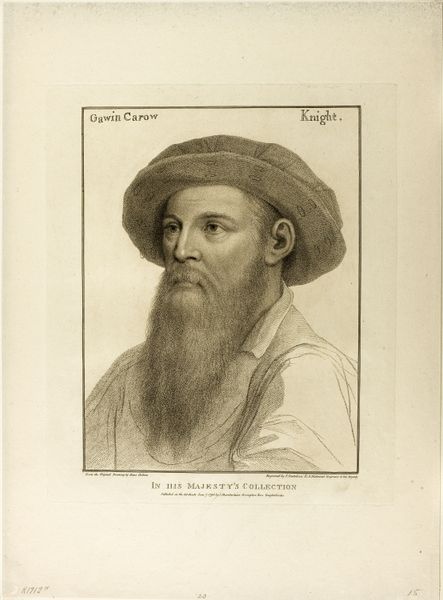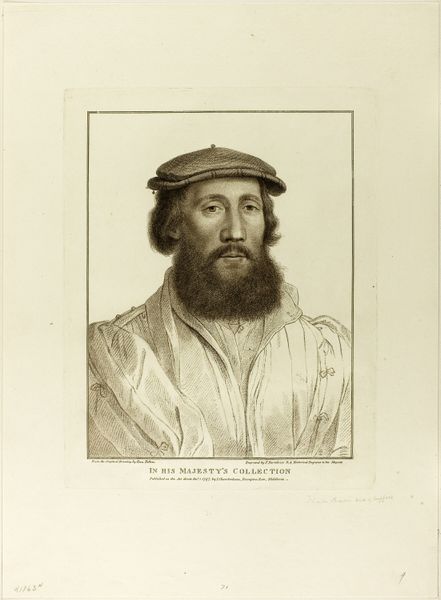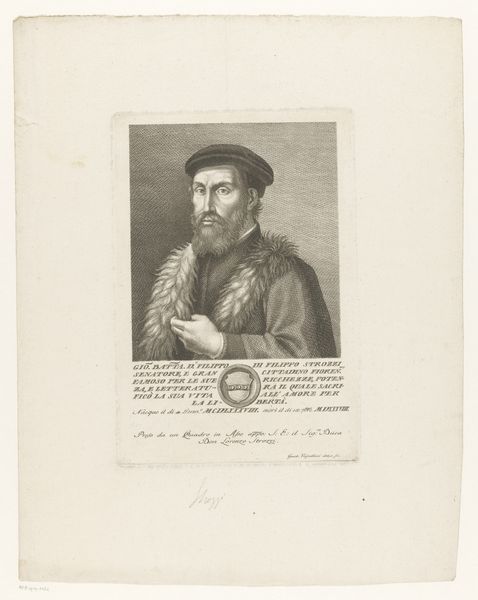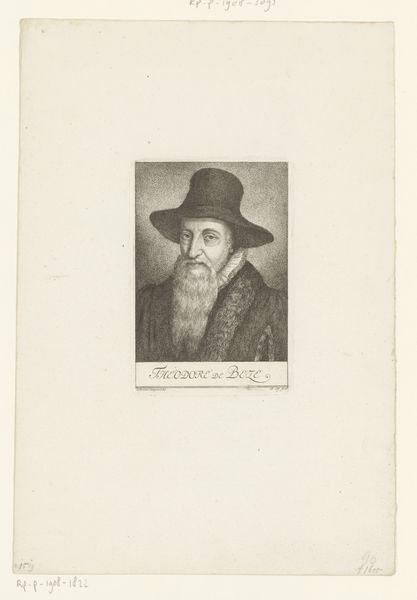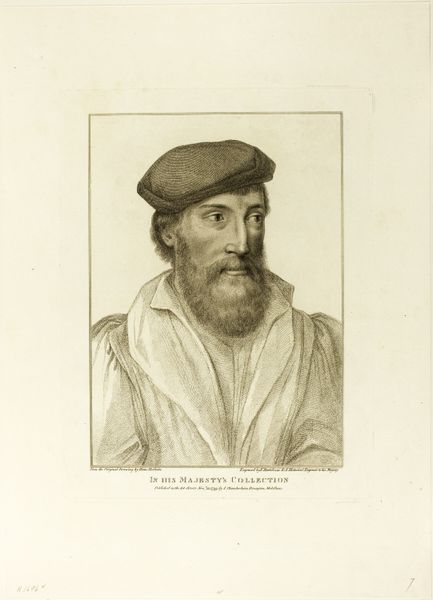
drawing, print, paper, engraving
#
portrait
#
drawing
#
neoclacissism
# print
#
paper
#
history-painting
#
academic-art
#
engraving
Dimensions: 322 × 280 mm (image); 393 × 329 mm (plate); 541 × 411 mm (sheet)
Copyright: Public Domain
Editor: Okay, so this is "Lord Wentworth", a print made by Francesco Bartolozzi in 1793. It looks like an engraving on paper, currently held here at the Art Institute of Chicago. I'm struck by its formality, that kind of stiff upper lip... it feels very deliberately posed. What sort of impression does it leave on you? Curator: It’s fascinating how Bartolozzi positions "Lord Wentworth" within a very specific visual and social landscape. The inscription "In His Majesty's Collection" is crucial here, reminding us that this image was intended for elite consumption, to be circulated among those in power, legitimizing and perpetuating a certain social order. Editor: So, this print wasn't really meant for everyone to see? Curator: Precisely! Consider the history of printmaking. It offered a *relatively* accessible means of disseminating imagery, but the production and distribution of prints like this were still highly controlled. They served to reinforce hierarchies. Have you considered the significance of its style being Academic art, closely following Neoclassical art? Editor: Yes, I did notice how cleanly rendered and balanced it is, but didn't make the connection! Almost like he’s trying to portray Lord Wentworth in an idealized light, rather than showing who he really was. Curator: Exactly. The clean lines, the classical references...it all speaks to an aspiration for permanence and authority. This is about crafting a specific image of power for posterity, ensuring his place within a particular historical narrative. Does understanding this change your initial interpretation? Editor: It does, actually. I saw the formality but missed the intentional political messaging within it. It's a portrait used as propaganda. Curator: I wouldn’t call it ‘propaganda,’ which can feel like an anachronistic term. It’s more accurate to say that it participates in image-making used to buttress existing power structures and socio-political thought, which isn't separate from its cultural function. Editor: I've learned something new today; looking closely, you see it's much more complex than you initially think. Thank you! Curator: My pleasure. It’s vital to analyze artwork with an awareness of their roles in society to have a good idea of history!
Comments
No comments
Be the first to comment and join the conversation on the ultimate creative platform.
